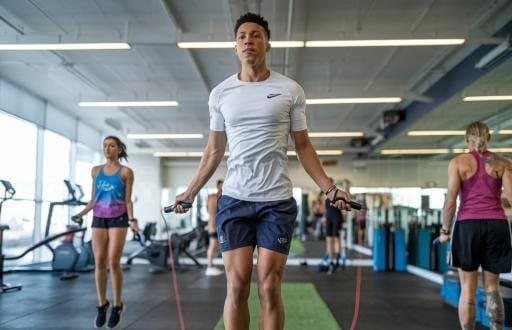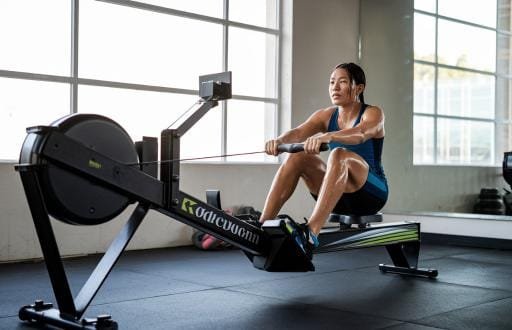In the pantheon of strength-training equipment, the pull-up bar stands as a testament to simplicity’s profound power. This austere piece of equipment, nothing more than a horizontal bar anchored at height, harbors the potential to catalyze extraordinary physical transformations and unlock unprecedented levels of upper body strength. While seemingly straightforward, the pull-up bar orchestrates a complex symphony of muscular engagement that few other tools can rival.
The Biomechanical Brilliance of Pull-Ups
When you grasp that steel bar overhead, you initiate a sophisticated cascade of muscular recruitment patterns that transcend simple vertical pulling. The pull-up, in its purest form, represents a masterclass in kinetic chain integration and bodyweight mastery.
Muscular Orchestra
- Primary Movers
- Latissimus Dorsi (the wings)
- Rhomboids (upper back stabilizers)
- Trapezius (postural powerhouse)
- Biceps Brachii (arm flexors)
- Supporting Cast
- Core stabilizers
- Forearm flexors
- Posterior deltoids
- Teres major and minor
The Weight Loss Connection
Metabolic Magic
Pull-ups trigger a remarkable metabolic response through several mechanisms:
- Hormonal Cascade
- Elevated testosterone production
- Enhanced growth hormone secretion
- Improved insulin sensitivity
- Optimized cortisol regulation
- Energy Expenditure
- High caloric burn during execution
- Extended post-exercise metabolism
- Enhanced muscle protein synthesis
- Improved glucose utilization
Progressive Mastery Protocol
Foundation Building
- Dead Hangs
- Grip strength development
- Shoulder stability enhancement
- Scapular control
- Mental fortitude building
- Negative Repetitions
- Eccentric strength development
- Neural pattern establishment
- Time under tension optimization
- Confidence building
Advanced Variations
- Wide-Grip Pull-Ups
- Enhanced lat engagement
- Increased range of motion
- Superior back width development
- Improved shoulder mobility
- Close-Grip Chin-Ups
- Maximized bicep recruitment
- Enhanced forearm development
- Improved pulling power
- Increased strength curve
Programming for Success
Workout Structures
- Beginner Protocol
- 3 sets of assisted pull-ups
- 2 sets of negative repetitions
- 3 sets of dead hangs
- Rest: 90 seconds between sets- Intermediate Configuration
- 5 sets of regular pull-ups
- 3 sets of mixed-grip variations
- 2 sets of hold positions
- Rest: 60 seconds between sets- Advanced Architecture
- 8 sets of weighted pull-ups
- 4 sets of explosive variations
- 3 sets of L-sit pull-ups
- Rest: 45 seconds between setsConclusion
The pull-up bar, in its magnificent simplicity, offers an unparalleled platform for upper body development and weight loss optimization. By embracing its challenges and progressively mastering its demands, practitioners can achieve remarkable transformations in both strength and body composition. The journey from dead hangs to weighted pull-ups represents not just physical progression, but a testament to human potential and perseverance.
Frequently Asked Questions (FAQ)
Q: How many pull-ups should a beginner aim for?
A: Start with mastering the dead hang and negative repetitions. Aim to perform 1-2 clean pull-ups initially, then build progressively.
Q: Can pull-ups really help with weight loss?
A: Absolutely. Pull-ups engage multiple large muscle groups simultaneously, increasing caloric expenditure and boosting metabolic rate both during and after exercise.
Q: How often should I train pull-ups?
A: Begin with 2-3 sessions per week, allowing 48 hours between sessions for recovery. Adjust frequency based on recovery capacity and progress.
Q: What if I can’t do a single pull-up?
A: Follow this progression:
- Dead hangs
- Scapular pulls
- Negative repetitions
- Assisted pull-ups
- Full pull-ups
Q: Are resistance bands helpful for pull-up training?
A: Yes, bands can provide progressive assistance while maintaining proper movement patterns. Gradually decrease band resistance as strength improves.
Q: How can I track my pull-up progress?
A: Monitor these key metrics:
- Total repetitions performed
- Time under tension
- Hold duration
- Rest periods required
- Form quality
- Recovery capacity
Q: Should I combine pull-ups with other exercises?
A: Yes, integrate pull-ups into a comprehensive program including:
- Pushing movements
- Lower body exercises
- Core work
- Mobility training
Remember, the journey to pull-up mastery is both challenging and rewarding. Focus on proper form, progressive overload, and consistent practice. Your dedication to this fundamental movement pattern will yield dividends in strength, aesthetics, and overall fitness capacity.
The pull-up bar remains an enduring symbol of functional strength and physical mastery. By incorporating this versatile tool into your fitness regime, you’re not just building a stronger back – you’re forging a more capable, resilient, and aesthetically pleasing physique. Embrace the challenge, trust the process, and pull your way to unprecedented levels of fitness excellence.










